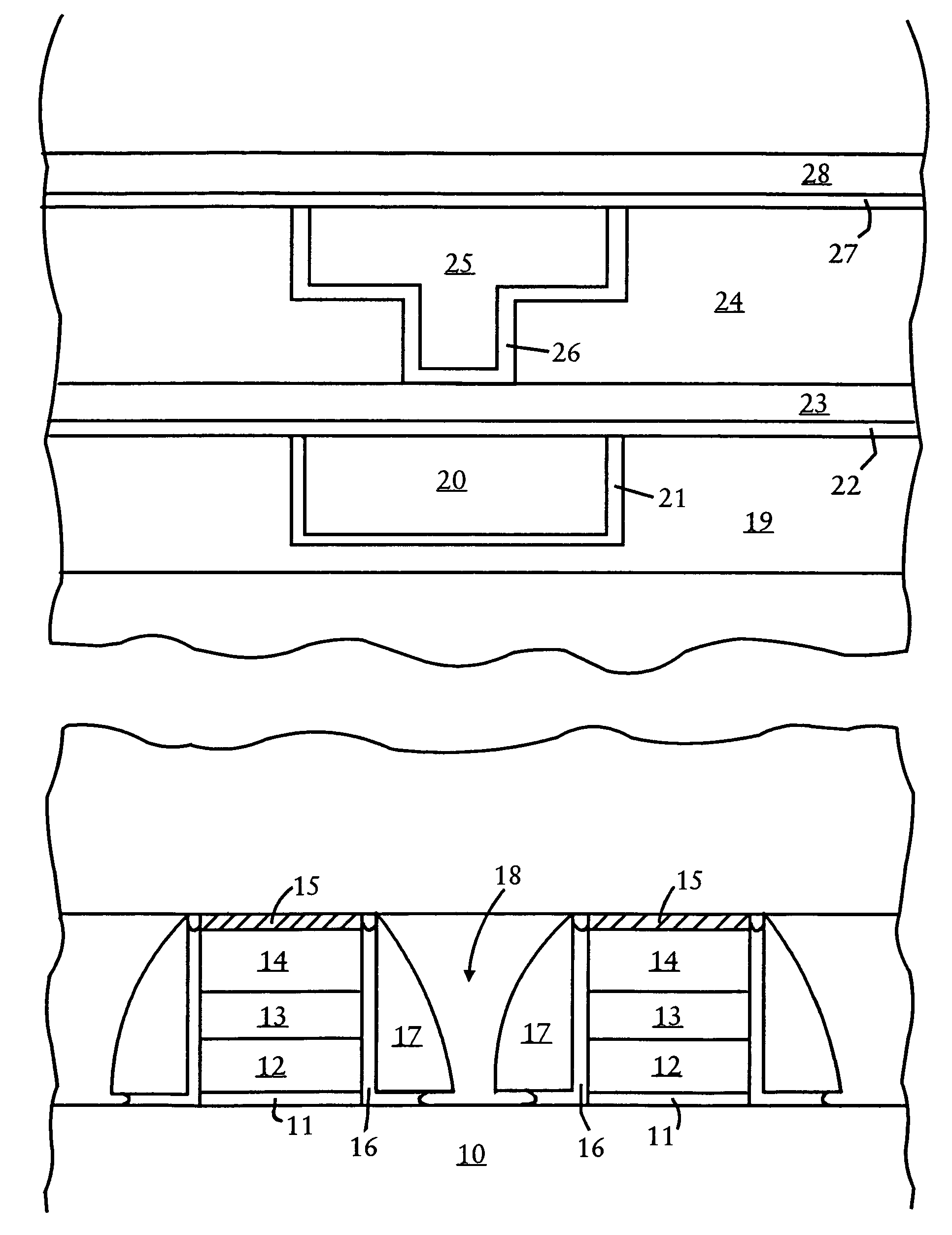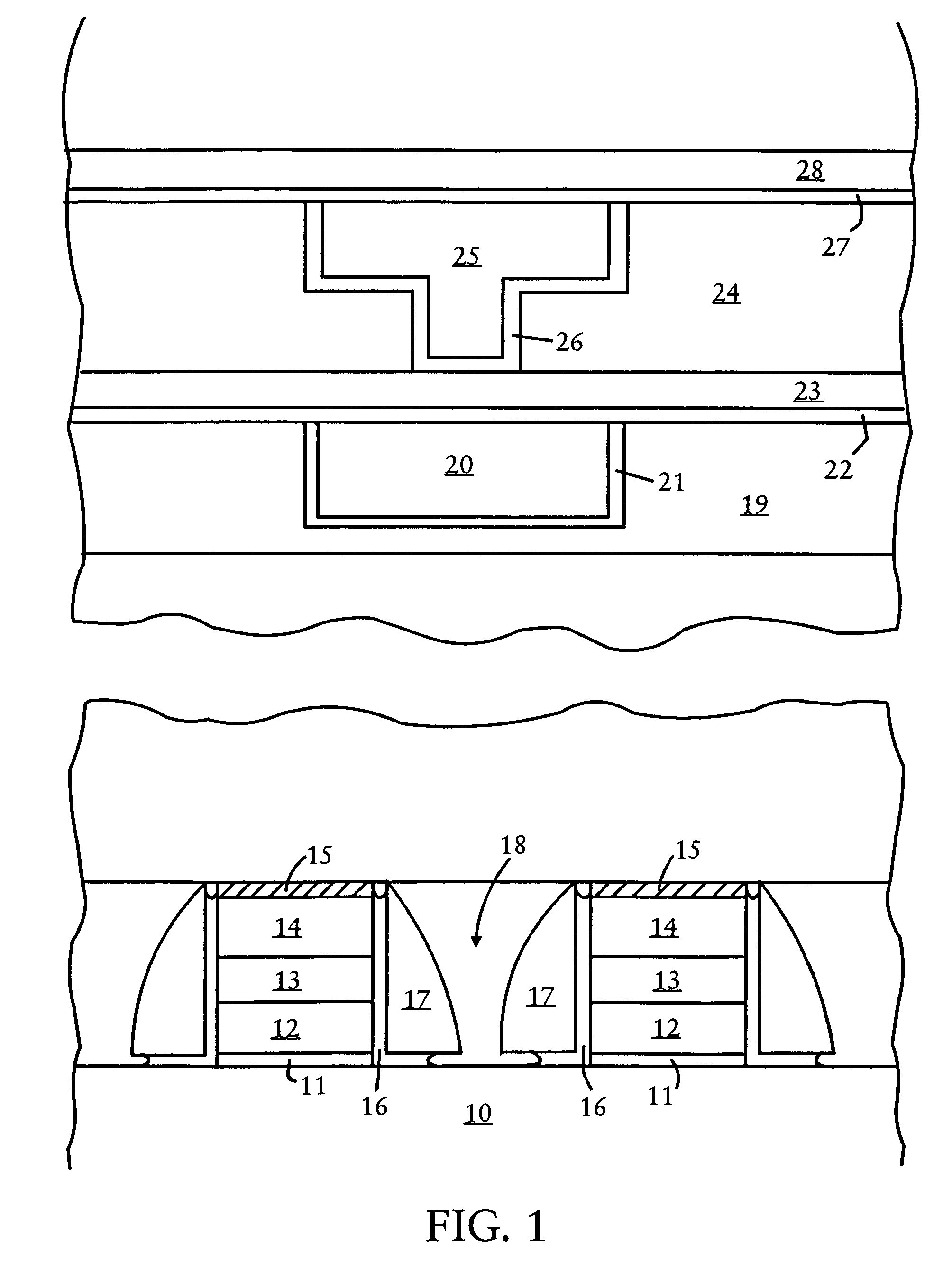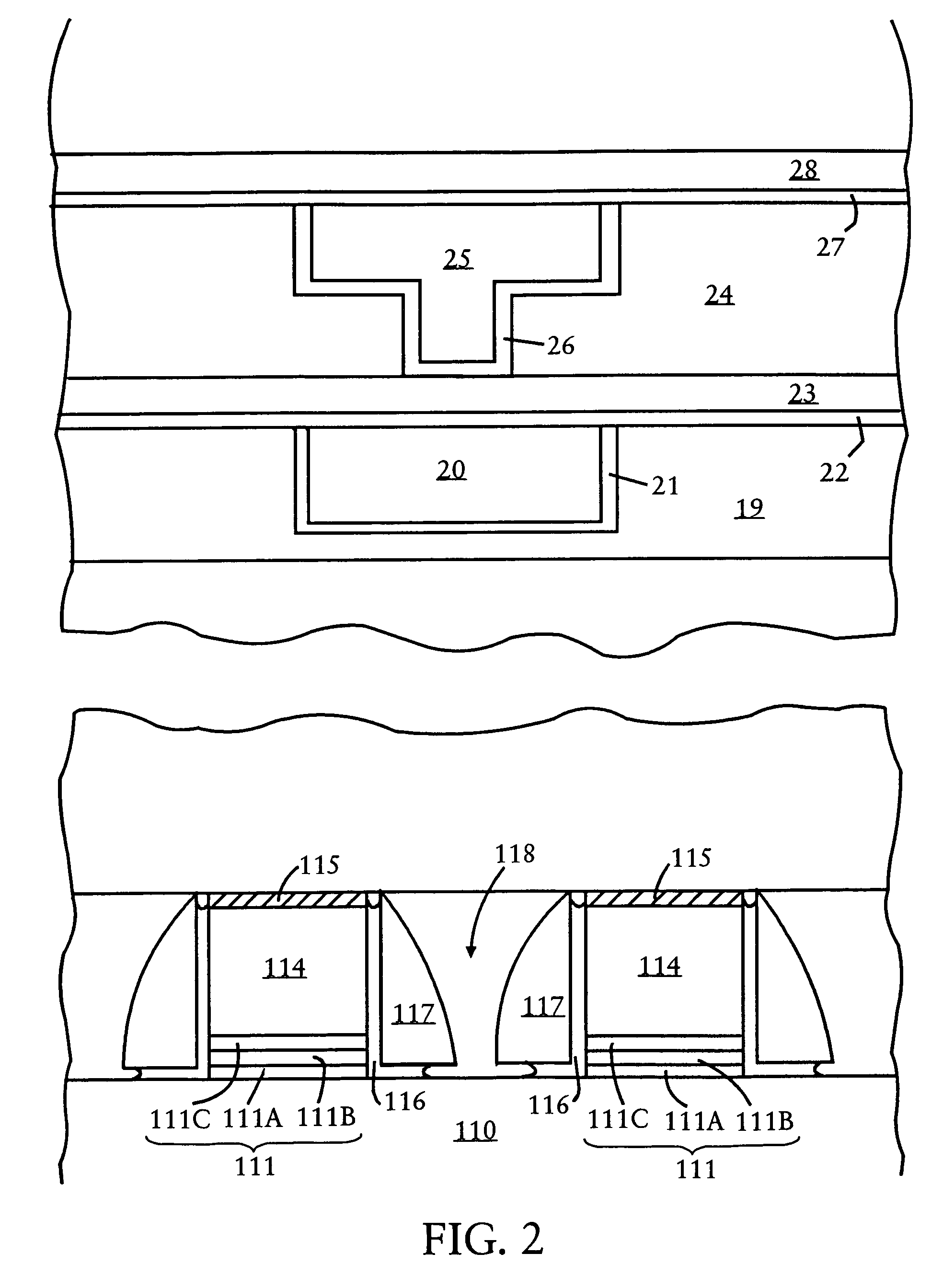Semiconductor devices with copper interconnects and composite silicon nitride capping layers
- Summary
- Abstract
- Description
- Claims
- Application Information
AI Technical Summary
Benefits of technology
Problems solved by technology
Method used
Image
Examples
Embodiment Construction
[0018]The present invention addresses and solves various reliability problems attendant upon conventional semiconductor fabrication techniques. These problems arise as semiconductor memory device dimensions continue to shrink, making it increasingly more difficult to effectively getter mobile ion contaminants, such as hydrogen. The hydrogen contamination problem becomes exacerbated when integrating copper interconnect technology with flash memory devices. It was found that conventionally deposited silicon nitride capping layers exhibit a relatively high degree of Si—H bonding, such as about 0.3% to about 0.9%, thereby generating charge loss problems for miniaturized flash technology. It was also found that the conventionally deposited silicon nitride layers do not adequately adhere to inlaid copper subsequent to implementing Cu CMP processing, even when the Cu surface is treated with an ammonia plasma. Such poor adhesion exacerbates electromigration issues.
[0019]The present inventio...
PUM
| Property | Measurement | Unit |
|---|---|---|
| Fraction | aaaaa | aaaaa |
| Fraction | aaaaa | aaaaa |
| Fraction | aaaaa | aaaaa |
Abstract
Description
Claims
Application Information
 Login to View More
Login to View More - R&D
- Intellectual Property
- Life Sciences
- Materials
- Tech Scout
- Unparalleled Data Quality
- Higher Quality Content
- 60% Fewer Hallucinations
Browse by: Latest US Patents, China's latest patents, Technical Efficacy Thesaurus, Application Domain, Technology Topic, Popular Technical Reports.
© 2025 PatSnap. All rights reserved.Legal|Privacy policy|Modern Slavery Act Transparency Statement|Sitemap|About US| Contact US: help@patsnap.com



